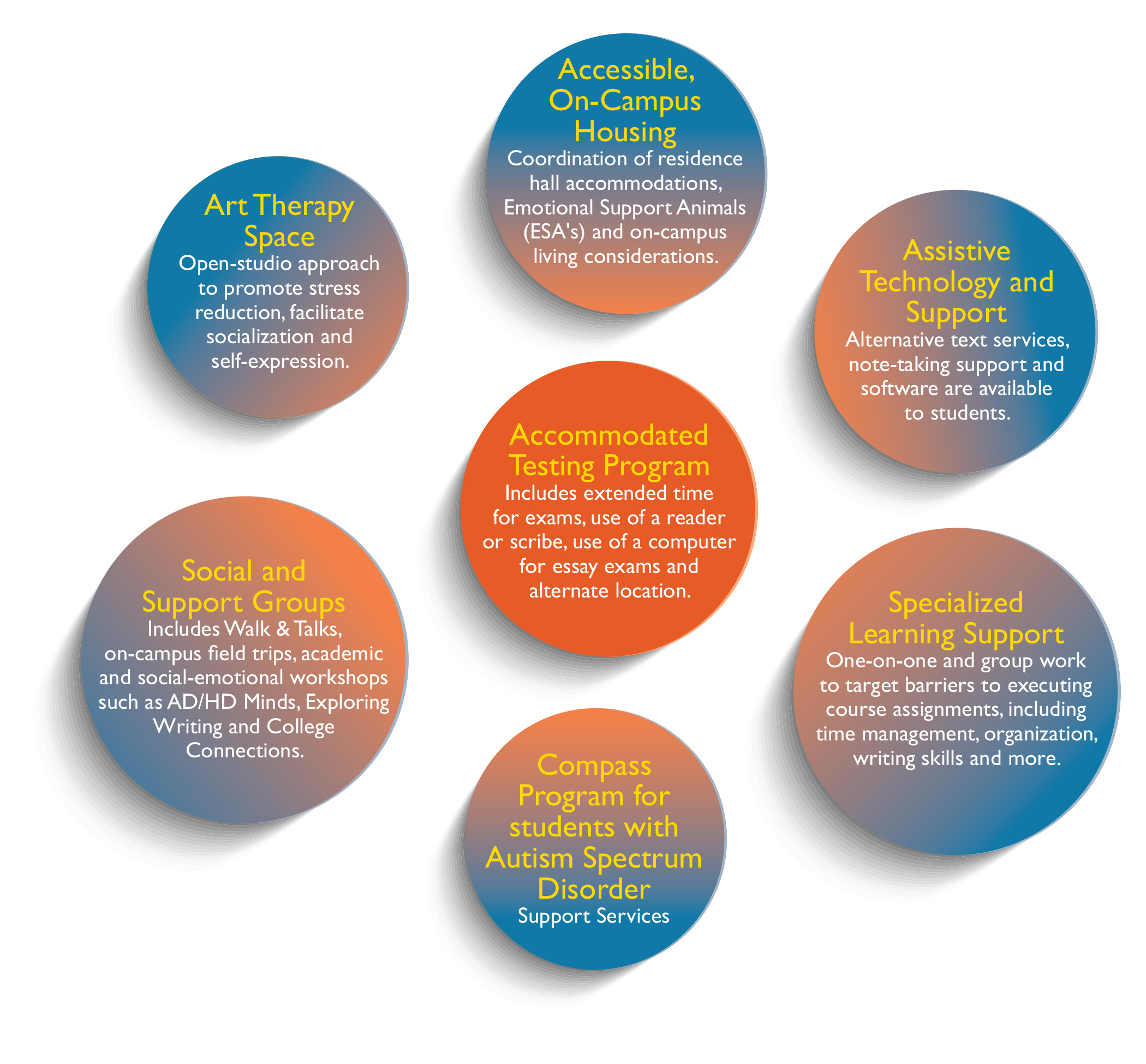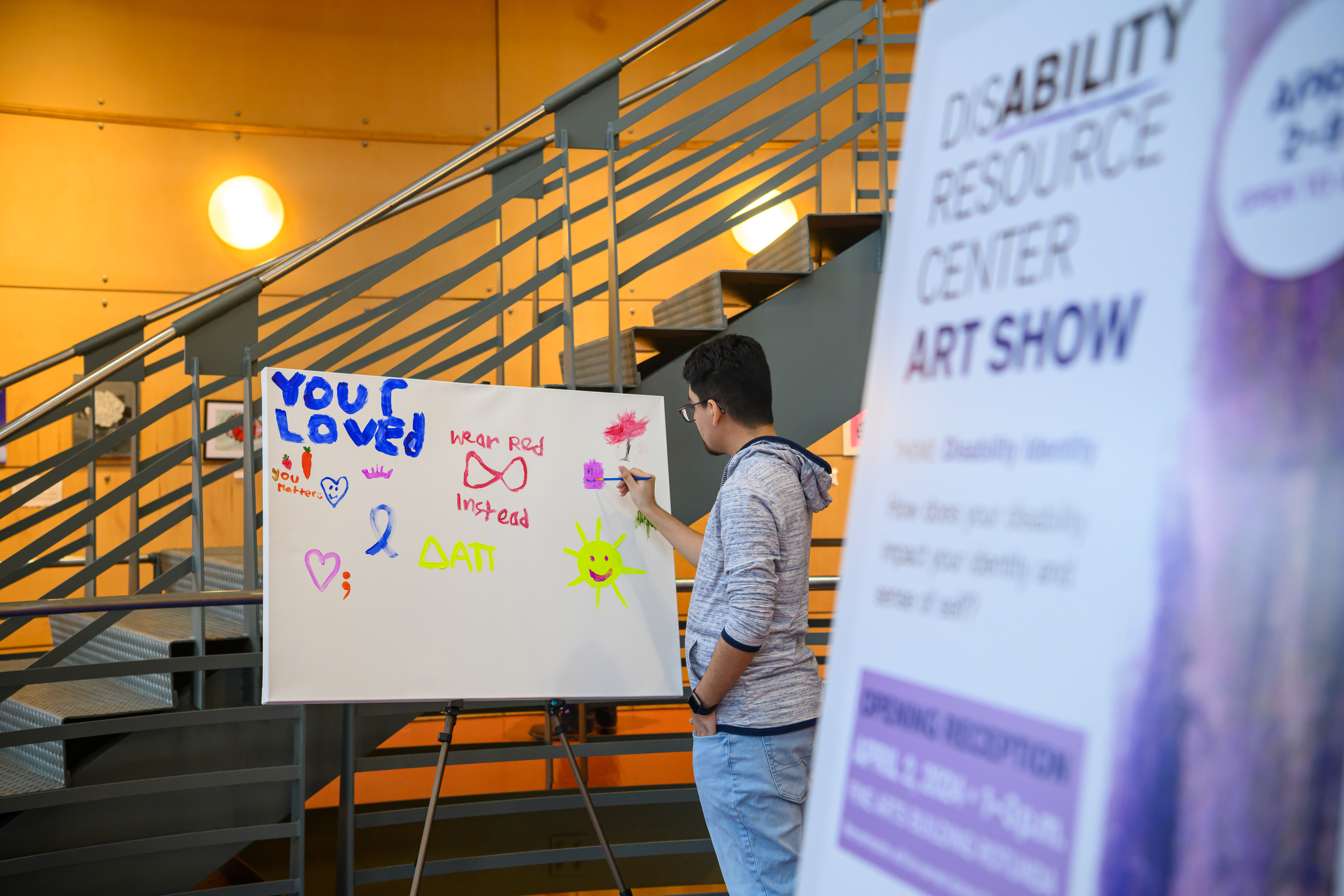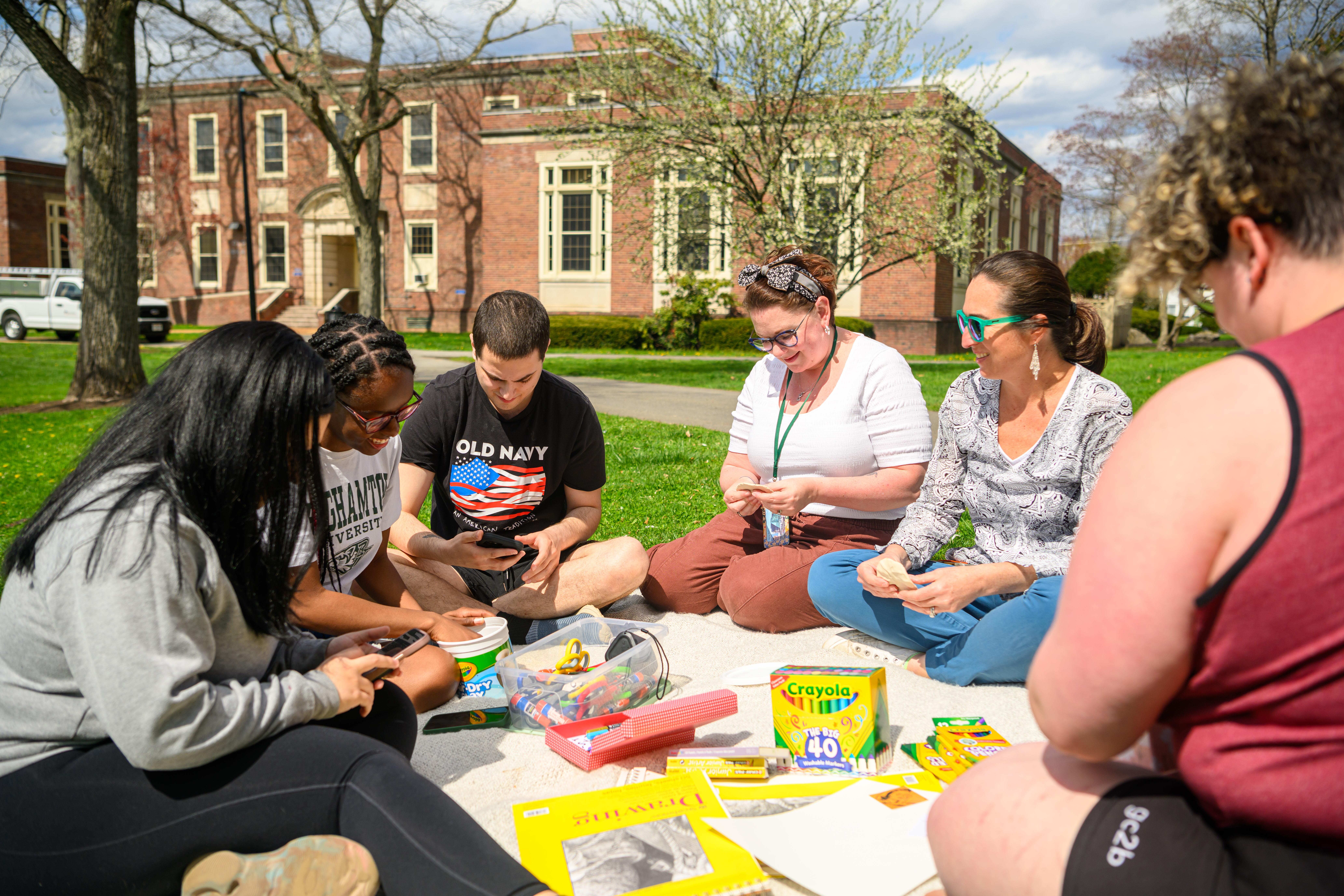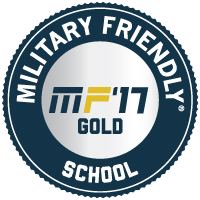When students walk into SUNY New Paltz’s Disability Resource Center (DRC), they know immediately they will be welcomed with open arms.
The Center is a hub of resources for students living with a wide range of permanent or temporary disabilities. Its services include everything from academic accommodations to assistive technology, but its deeper mission is to encourage independence, ensure recognition of students’ abilities as they become active participants in a diverse and global society, and build community within the social fabric of campus.
“We try to offer opportunities for students to connect with each other,” said Assistant Director for Learning Support & Neurodiversity Initiatives Emi DiSciullo. “It enhances the student experience when they can meet others who they might have a lot in common with.”
These kinds of resources have never been more vital to the student experience at New Paltz. The DRC’s roster has ballooned to more than 920 students, close to 15% of the University’s overall student population, who benefit from their services in some form.

To keep up with this need, the Disability Resource Center’s team has expanded in recent years. They’ve also deepened their engagement with supporters from the broader campus community to create new benefits for students made possible by philanthropic support.
These expansions have made it possible for the DRC at SUNY New Paltz to keep intact the deeper value of its place on campus. While many contemporary universities offer accommodations for individuals living with disabilities, New Paltz students who work with the DRC say they get something much more powerful: a space to be themselves.
“They’ve helped me in every way,” said Dayanara Medina-Tapia ’25 (Astronomy). “My grades have skyrocketed because of the extra help I get with homework and tests, and I have met peers that I know will be lifelong friends.”

With a little help, we can overcome any challenge
The Disability Resource Center was established at SUNY New Paltz in 2003. In the decades since, its services have expanded to keep pace with demand. At the same time, the cultural understanding of academic aid for students with disabilities has increased, with the publication of numerous studies providing evidence that investments in these areas lead directly to more positive educational outcomes.
“I think our campus does a great job of fostering an inclusive community for students with disabilities,” said Ashley Guerrero ’10 (Sociology) ’14g (School Counseling), who was named director of the Disability Resource Center (DRC) in 2023. “There are always opportunities for students to not only feel welcomed, but to feel a sense of accomplishment.”
A primary success story in recent years has been made possible thanks to alumna Myra Kressner ’76 (Secondary Education: English) and her deep, ongoing relationship with her alma mater.
A leading advocate for individuals living with Autism Spectrum Disorder and one of the University’s most engaged alumnae, Kressner worked with the University to establish the Kressner Autism Spectrum Program Fund (KASP), which is creating new resources for students like the Compass Program, Jobs for Juniors and special classes designed to promote success in the classroom and in internships.
Kressner’s advocacy on this issue is motivated in part through her own journey as a parent of a daughter living with Autism, and her desire to support today’s young learners in ways that had not been available to her own child.
“I was motivated to start the Kressner Autism Spectrum Program to provide neuro-diverse students additional resources to help enable their success at New Paltz, and also in their career of choice after graduation,” Kressner said. “When we speak with these bright and talented students, hear their vision for the future, or for some, the challenges they have overcome to succeed, we are motivated to do even more students seeking their higher education at New Paltz.”
The Fund’s impact goes well beyond the classroom. Hannah Pedersen ’25 (Early Childhood & Childhood Education) has taken advantage of opportunities created through the Kressner Program’s Jobs for Juniors initiative, gain professional skills through an internship at the campus Sojourner Truth Library.
“This experience prepared me for things I know I’ll have to deal with once I graduate, including how to navigate the interview process, how to work with a supervisor and taking responsibility in a professional role,” Pedersen said.
Identity beyond ability

For students like Bailey Savatgy ’25, pictured right, (English: Creative Writing) — who uses they/them pronouns — the core benefit of the Disability Resource Center is less about any one service provided, and more about how it gives them a chance to see themselves outside of living with a disability.
“It feels empowering to know that I can surpass my own expectations of myself,” they said.
Center staff work tirelessly to create an accommodative, inclusive experience for the students they serve, and they are increasingly looking to partners in other areas of campus, and beyond, to implement new opportunities to help students reach their highest potential.
“We know especially that involvement from other departments and campus stakeholders can go a long way in giving our students what they need to thrive,” said Guerrero. “Awareness is key, because we could do so much more if more affiliated with New Paltz knew who we are and the services we provide. It would be great to get the word out about what we have to offer, so we can encourage different partners on campus to get involved.”
A recent example of this kind of collaboration started at the DRC as a simple gathering of students and staff interested in art therapy. What began as a creative outlet became a more serious passion that the group knew they wanted to share with the campus community.
“The DRC is just a space for me to calm down, gather my thoughts and draw,” said Allison Zuclich ’24 (Anthropology). “I know that when I go to the art therapy group, I can show my lived experience with Autism Spectrum Disorder and not be judged.”
In spring 2024, the DRC hosted its largest-ever Art Show, an exhibition of original work that was presented in the same School of Fine & Performing Arts space that houses other major visual arts exhibitions.
The event shows the potential of the DRC model – starting from a place of helping students overcome their challenges, and shifting the focus onto how their unique experiences and perspectives can contribute new ideas to the intellectual and cultural life of the University.
“Having this display allowed me to be more open than ever before about my passions and my struggles with ADHD,” said Medina-Tapia.


.png)
